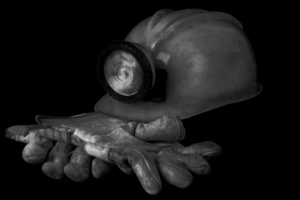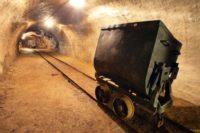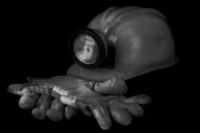 Mining fatality and injury rates fell to an all-time low in 2011 according to data recently released from the U.S. Department of Labor's Mine Safety and Health Administration (MSHA).
Mining fatality and injury rates fell to an all-time low in 2011 according to data recently released from the U.S. Department of Labor's Mine Safety and Health Administration (MSHA).
The fatal injury rate for mining as a whole was .0114 per 200,000 hours worked, and the all-injury rate was 2.73 per 200,000 hours worked, down from .0234 and 2.81, respectively, in 2010. In the metal/nonmetal mining sector, the fatal injury rate was .0084 per 200,000 hours worked, and the all-injury rate was 2.28 per 200,000 hours worked, down from .0129 and 2.37, respectively, in 2010. In the coal mining sector, the fatal injury rate was .0156 per 200,000 hours worked, and the all-injury rate was 3.38 per 200,000 hours worked, down from .0384 and 3.43, respectively, in 2010.
MSHA also released a third-quarter summary of mining deaths across the country. From July through September 2012, 11 deaths occurred in work-related accidents – six in coal mining and five in metal/nonmetal mining.
Of the six coal mining deaths, one miner was killed as a result of a machinery accident; two miners were fatally injured as a result of fall of rib, roof, face or back accidents; and three miners were killed in powered haulage accidents. Of the five metal/nonmetal mining deaths, two miners died as a result of falls, one miner died in a machinery accident, one miner lost his life due to falling material, and one miner was killed in a powered haulage accident.
"Even though the mining industry has achieved historic low fatality and injury rates, we know that more needs to be done, and that fatalities and injuries are preventable," said Joseph A. Main, assistant secretary of labor for mine safety and health. "Many mines operate every shift of every day, year in and year out, without a fatality or a lost-time injury. Fatalities can be prevented through effective safety and health management programs in the workplace. Pre-shift and on-shift examinations can identify and eliminate hazards that kill and injure miners. And providing effective and appropriate training will ensure that miners recognize and understand hazards and how to control or eliminate them."
To identify mines with health and safety problems, MSHA has undertaken a number of outreach and enforcement initiatives such as special impact inspections and "Rules to Live By," a fatality prevention program that highlights the safety and health standards most frequently cited during fatal accident investigations. "We believe these actions, along with those adopted by the mining industry, can make a positive difference," said Main.
An analysis of third-quarter mining fatalities, along with best practices to help mine operations avoid such fatalities, is available on MSHA's website at http://www.msha.gov/fatals/summaries/summaries.asp.

